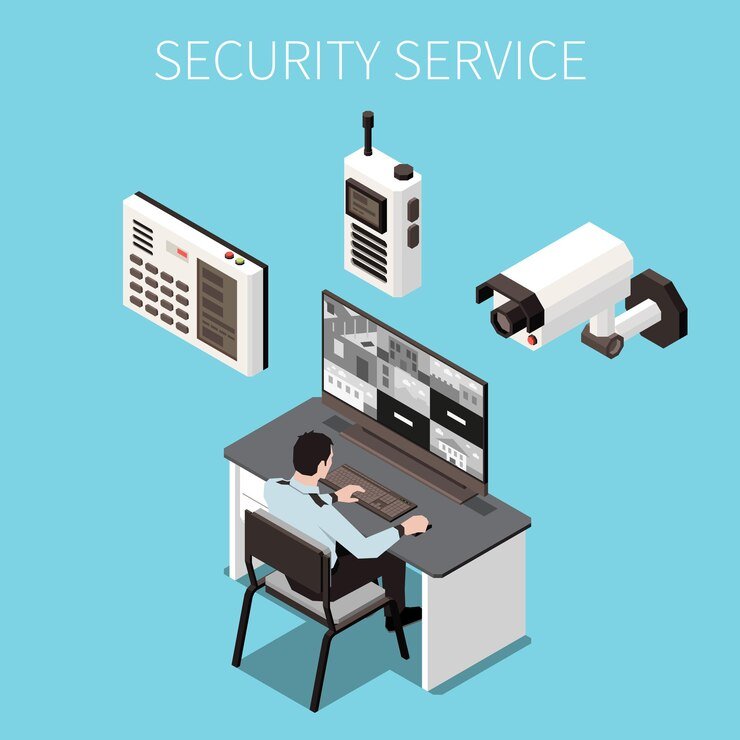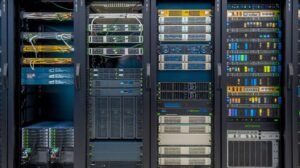In the quickly changing security world of today, a stand-alone security solution is frequently unable to handle every possible threat. You can greatly increase the efficacy of your security infrastructure by integrating CCTV surveillance with other security technologies. In addition to offering a stronger defense against illegal entry and criminal activity, this all-encompassing strategy also guarantees a safer environment for both residential and commercial premises. We will discuss the advantages, methods, and important factors to take into account when combining CCTV monitoring services with other security systems in this blog.
Understanding CCTV Monitoring Services
Surveillance cameras are used in CCTV monitoring services to watch and document activity on and around a place. These services are essential for preventing criminal activity, giving proof in the event of an occurrence, and guaranteeing that sensitive areas are monitored in real time. With their cutting-edge capabilities like motion detection, night vision, high definition video, and remote access, modern CCTV systems are an essential part of any all-encompassing security plan.
The Need for Integrated Security Systems
Even though CCTV monitoring services are quite beneficial on their own
combining them with additional security systems can increase their impact. An integrated security system creates a multi-layered defense mechanism by integrating several security measures that function together cohesively. The following justifies the necessity of integrating CCTV with other security systems:
- Enhanced Surveillance Coverage: Combining CCTV with access control, alarm systems, and other security measures ensures comprehensive coverage of all entry points and vulnerable areas.
- Real-Time Alerts and Responses: Integrated systems can trigger real-time alerts and automatic responses, such as locking doors or notifying security personnel, in case of suspicious activities.
- Improved Incident Management: Seamless integration allows for better incident management by providing a centralized platform to monitor and control all security components.
- Cost-Effectiveness: Integrating systems can reduce overall costs by minimizing the need for multiple standalone systems and streamlining maintenance and monitoring processes.
Key Components of an Integrated Security System
To effectively integrate CCTV monitoring services with other security systems, it’s important to understand the key components involved:
- Access Control Systems: These systems regulate who can enter or exit a building or specific area. Integrating access control with CCTV allows for visual verification of individuals accessing restricted areas, enhancing security.
- Intrusion Detection Systems: These systems detect unauthorized entries or breaches. When integrated with CCTV, intrusion detection systems can prompt cameras to focus on the breach point, providing real-time footage for immediate response.
- Alarm Systems: Alarms alert security personnel and residents of potential threats. Integrating alarms with CCTV ensures that any triggered alarm is visually verified, reducing false alarms and ensuring appropriate responses.
- Intercom Systems: Intercoms facilitate communication between different areas of a property. Integration with CCTV allows for visual confirmation of visitors before granting access, adding an extra layer of security.
- Fire and Smoke Detection Systems: These systems detect fire or smoke within a property. Integration with CCTV provides visual confirmation of the location and severity of the threat
aiding in efficient evacuation and emergency response.
Strategies for Effective Integration
Integrating CCTV monitoring services with other security systems requires careful planning and execution. Here are some strategies to ensure a successful integration:
- Assess Your Security Needs: Conduct a thorough assessment of your security needs and identify the specific areas where integration can enhance security. This includes evaluating the property’s layout, identifying high-risk areas, and understanding potential threats.
- Choose Compatible Systems: Ensure that the systems you choose for integration are compatible and can communicate seamlessly. This may involve selecting systems from the same manufacturer or ensuring they support standard integration protocols.
- Centralized Management: Implement a centralized management platform that allows for easy monitoring and control of all integrated systems. This platform should provide real-time data, alerts, and the ability to manage multiple security components from a single interface.
- Regular Maintenance and Upgrades: Regularly maintain and upgrade your integrated security system to ensure optimal performance. This includes updating software, replacing outdated hardware, and conducting periodic system checks.
- Training and Awareness: Train security personnel and residents on how to use the integrated system effectively. This includes understanding how different components work together and how to respond to alerts and incidents.
Benefits of Integrated Security Systems
Integrating CCTV monitoring services with other security systems offers numerous benefits that contribute to a safer and more secure environment:
- Increased Deterrence: The presence of a comprehensive security system acts as a strong deterrent to potential intruders and criminals.
- Improved Response Times: Integrated systems provide real-time alerts and visual verification, enabling faster and more effective responses to incidents.
- Reduced False Alarms: Visual verification through CCTV reduces the likelihood of false alarms, ensuring that security personnel can focus on genuine threats.
- Enhanced Situational Awareness: A centralized platform provides a holistic view of the security landscape, allowing for better situational awareness and decision-making.
- Cost Savings: Streamlining multiple security systems into an integrated solution can reduce installation, maintenance, and monitoring costs.
Real-World Applications
The integration of CCTV monitoring services with other security systems is applicable across various sectors, including:
- Residential Properties: Homeowners can enhance their security by integrating CCTV with access control, alarms, and intercom systems, ensuring a safe living environment.
- Commercial Properties: Businesses can protect their assets and employees by implementing integrated security solutions that cover entry points, storage areas, and workspaces.
- Educational Institutions: Schools and universities can ensure the safety of students and staff by integrating CCTV with access control and intrusion detection systems.
- Healthcare Facilities: Hospitals and clinics can secure sensitive areas, such as medication storage and patient wards, by combining CCTV with access control and alarm systems.
- Retail Stores: Retailers can prevent theft and monitor customer behavior by integrating CCTV with intrusion detection and alarm systems.
Conclusion
To sum up, combining CCTV monitoring services with other security measures is a smart way to raise a
property’s overall security. Property owners can get better event management, real-time notifications, and
a wider surveillance coverage by integrating several security components into a unified system. This integration gives improved situational awareness, cost savings, and a strong defense against possible threats. Adopting integrated security solutions will be crucial for keeping ahead of emerging threats and
guaranteeing a safer environment for everybody as the security landscape continues to change.





Арматура диаметром 32 мм, изготовленная из стали марки А500С, является одним из самых востребованных видов металлопроката в строительстве. Она применяется при возведении фундаментов, армировании стен и перемычек. https://armatura32.ru